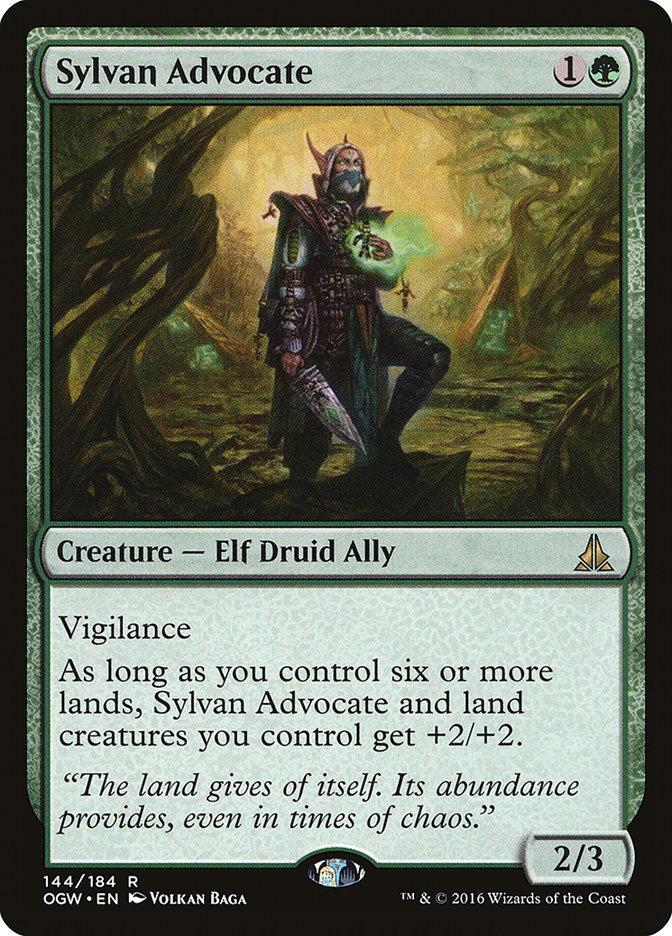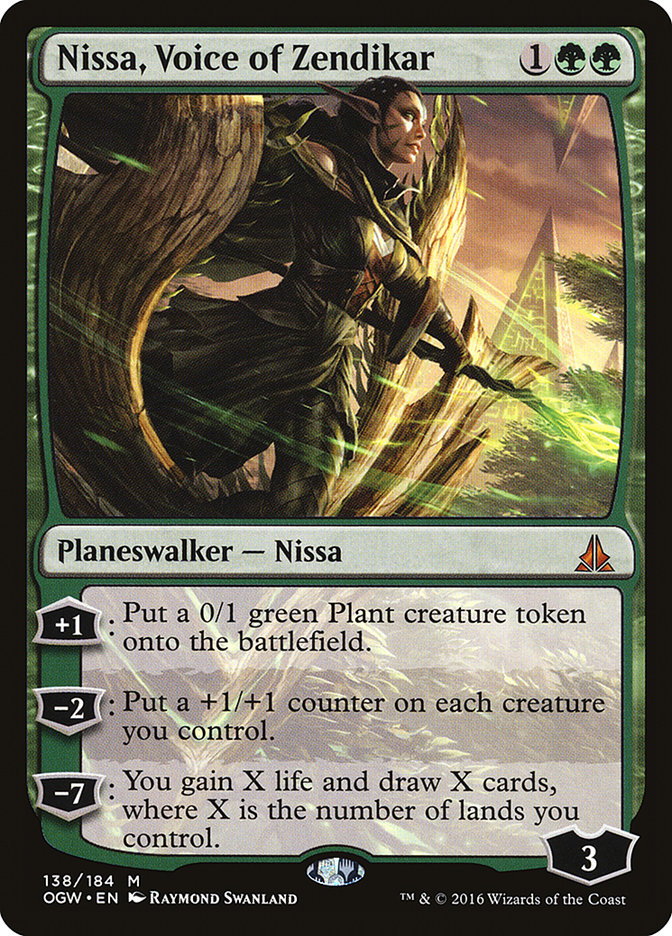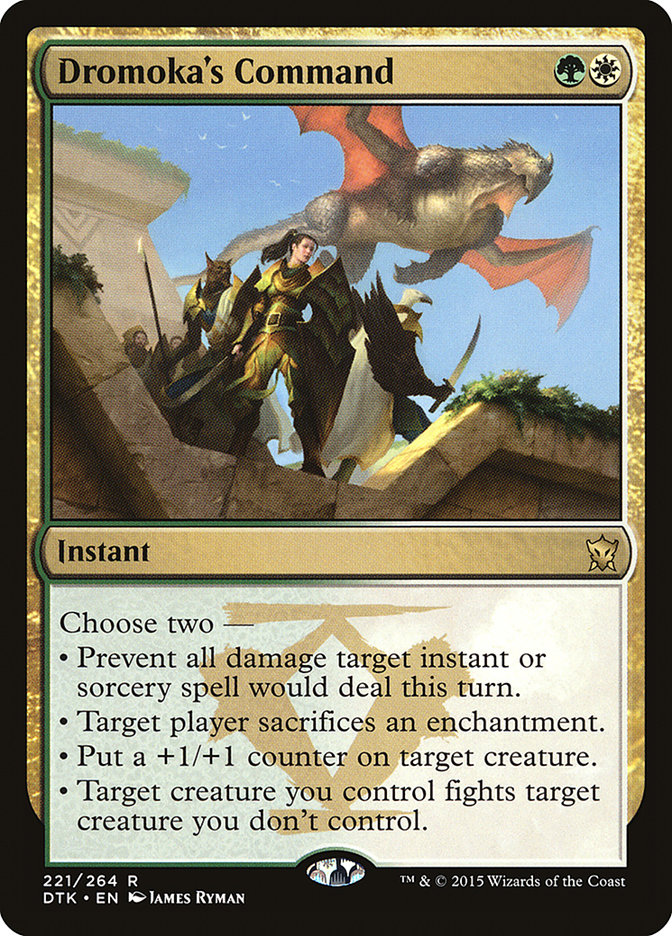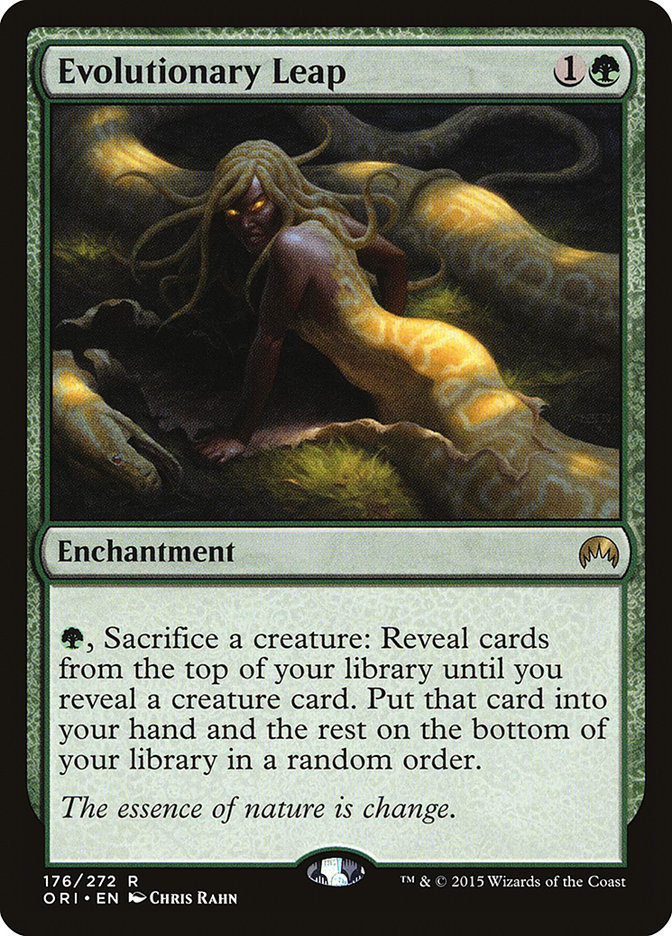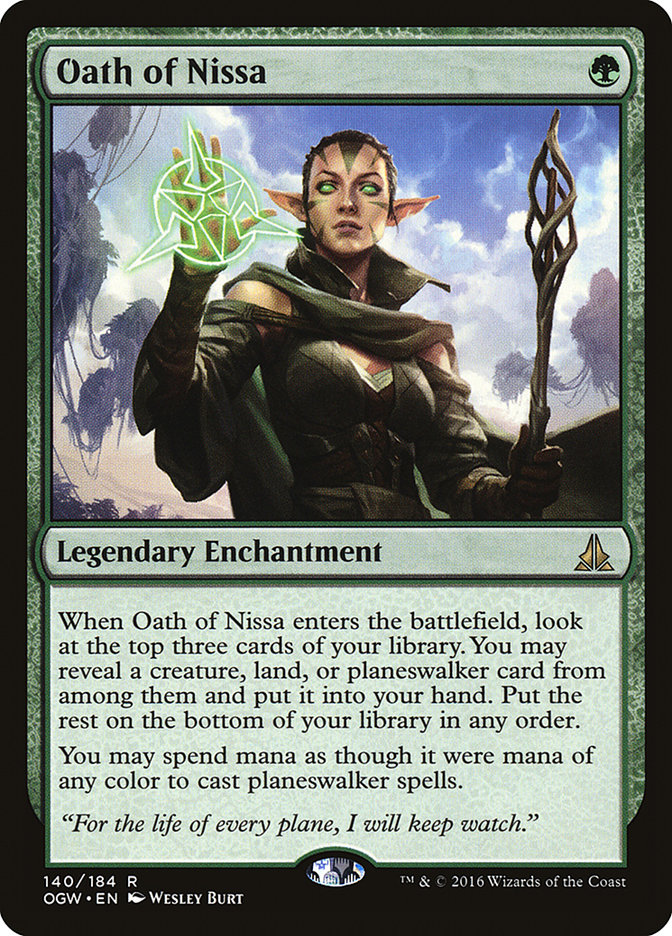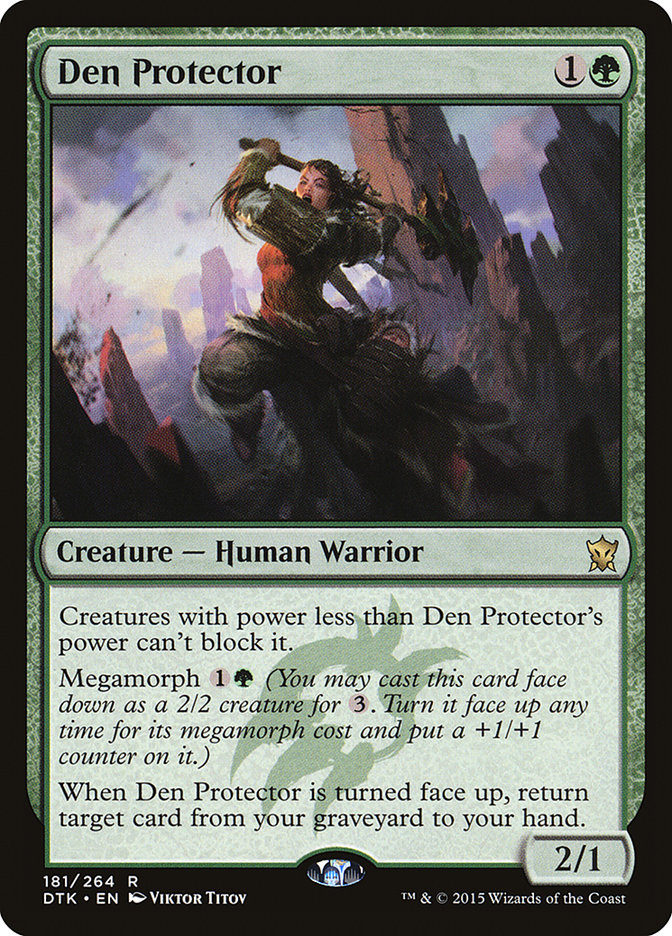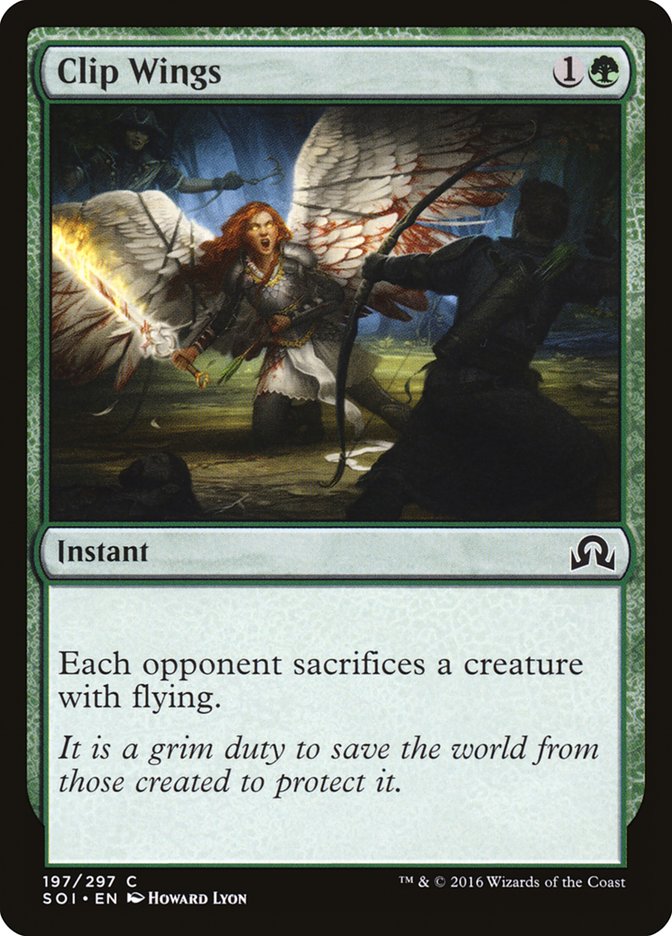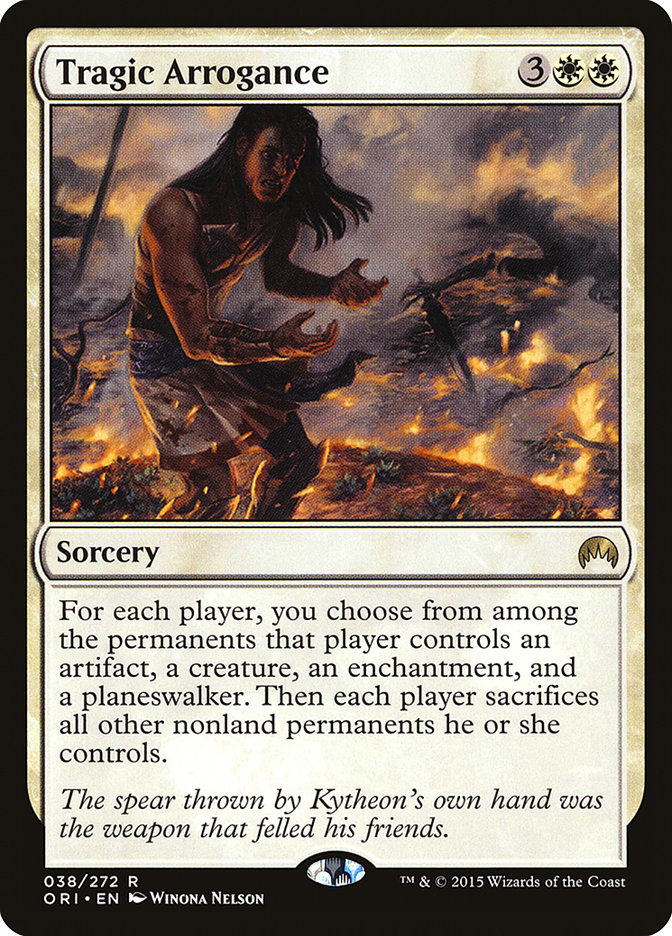Look, I get it. How can the G/W Tokens mirror be interesting enough to warrant an entire article?
Trust me on this one!
G/W Tokens’s Role In Standard
Leading up to #GPNY, I did a significant amount of testing with G/W Tokens. While I didn’t even end up playing the deck (which may have been a good thing, but we’ll get to that next week), Michael Majors did, and he made it all the way to the Top 4.
Creatures (12)
Planeswalkers (8)
Lands (26)
Spells (14)

The plan against most decks is pretty much the same: accrue advantage from various sources and eventually translate that into a victory. Sometimes it’s a quick beatdown draw that Languish decks aren’t equipped to handle thanks to your various sticky or flash threats. Sometimes, it’s a long, drawn-out game where you end up removing your opponent’s relevant cards, create more resources than they do, and eventually bury them.
G/W Tokens is the Standard deck that punishes control for, you know, trying to control people with sweepers and other removal spells. Since most lists are light on removal, G/W Tokens is vulnerable to the occasional Kalitas, Traitor of Ghet, Dragonlord Ojutai, or random planeswalker, but it can power through basically anything else.
This is why you probably won’t see me playing a control deck in this format. G/W has the best cheap planeswalkers, the best card advantage, access to the best spot removal if you want it, and some of the best sweepers. Chances are, if you’re G/W, you can play a better control deck than anyone else. You also check those decks very well.
Hyper-aggressive strategies can get under you, but Sylvan Advocate, Hangarback Walker, and even Nissa, Voice of Zendikar can give them serious issues. More importantly, if you want to beat a deck like Boss Humans, you probably can.
The Broad Strokes of the Mirror
Both players continually jockey for position until the game (usually) ends in dramatic fashion.
Planeswalkers are key. Without them, you’ll fall behind quickly. If you’re in that position, you’ll need to put them in a situation where they have to chump block against your bigger battlefield, pressure them with evasion, transform Archangel Avacyn, or Fireball them out with Secure the Wastes. On top of it all, you need to dance about them potentially killing you on the swing back with a Nissa, Voice of Zendikar -2 or a Gideon, Ally of Zendikar -4 ability.
Winning the die roll can be important in some games, but again, turn 3 Nissa into turn 4 Gideon solves many of your problems, especially if your opponent’s draw is lacking. Maintaining a cheap mana curve helps you curve out more frequently, but so does having a form of card advantage. You can’t exchange too much power in order to have cheaper spells because the games end up going long sometimes.
Combat is a big deal. It will happen twice in a turn in most scenarios, so be familiar with how to pressure planeswalkers while also defending your own.
The Details
In the beginning, I was looking for shots to fire off Secure the Wastes; cash in Gideon, Ally of Zendikar for an emblem; and send some of my creatures to certain doom in exchange for a big chunk of damage. At those times, it always looked that it was my best plan.
It rarely worked out.
Either they’d have a Secure the Wastes of their own, or they had been trying to set up Archangel Avacyn plus Hangarback Walker for zero, and I’d get stopped in my tracks rather abruptly. Over time, I realized that since that plan rarely works, I should simply be trying to get the most out of my cards instead of going for the jugular.
Don’t expend your finite resources and don’t do anything, really. As Majors pointed out in his article, “don’t try to kill your opponent” became the mantra.
Seriously.
Using Dromoka’s Command to kill their turn 2 Sylvan Advocate on the play is like bluffing the river in poker. It might work out, but it’s not necessarily correct to do every time.
Sometimes that type of play can snowball. Now that you have the biggest, baddest thing on the battlefield, their Nissa, Voice of Zendikar is stuck on chump blocking duty. They’ll slowly accumulate loyalty, but at the expense of their battlefield position. Meanwhile, you’ll be accumulating creatures and will eventually be able to break through and finish off their planeswalker.
Other times, your Sylvan Advocate might feel irrelevant. The battlefield can get cluttered quickly, at which point your Sylvan Advocates (and anything else really) won’t be able to attack profitably. Toward the late-game, you might think, “Man, I wish I had a Dromoka’s Command right now.” Chances are, you probably could if you don’t use it early for minimal gain.
When effects are at a premium (say, removal in Limited), you learn to save those effects for when they truly matter; otherwise you risk losing to a card you can no longer deal with. We’re kind of used to “blowing” our removal in Constructed because there is always plenty more. Most G/W decks aren’t constructed that way, although they could be.
There will be times when an aggressive Dromoka’s Command will put you firmly in the driver’s seat, but it’s typically when you’re using it to clear a blocker and kill a planeswalker. That is almost always a trade worth taking. As always, there isn’t a blanket statement to make in regards to when you should use your removal, but I do think you should err on the conservative side.
Similarly, don’t play Archangel Avacyn without getting any value from her, and specifically don’t walk into her into an opposing Dromoka’s Command. A 4/4 vigilance flier can rule the battlefield, but Archangel Avacyn’s enters-the-battlefield trigger is potent, plus it’s something unique that you can’t get from any other card in your deck. Use it when it’s valuable; otherwise you’re not getting the most out of each of your cards.
If they pass the turn without attacking out of fear of your Archangel Avacyn, that’s fine. You can save Avacyn for later. At some point she’s going to do something excellent for you. By not casting her, your opponent may think that you don’t have her at all!
There will be times when you can make a safe-looking attack because you have Archangel Avacyn. However, if they have their own Archangel Avacyn, you didn’t accomplish much, since your creatures will bounce off theirs. You can probably get more out of your Archangel Avacyn later.
At some points, you’ll be able to deploy Archangel Avacyn and transform her with Hangarback Walker for zero or Evolutionary Leap, and that’s obviously worth doing. Again, be wary of Dromoka’s Command. Also, keep in mind that transforming Archangel Avacyn at the first opportunity might not be the correct play. You may be able to eke out more value later.
Eventually, the time will come when you will start getting aggressive. You win once you have an insurmountable battlefield presence. In short, the timing of when to use your cards matters, possibly more than anything else in the matchup.
This is not just a sideboard card.
Since #PTSOI, everyone seems to be going in different directions with G/W Tokens, and no one seems able to come to a consensus on what build is best or how the deck wants to be configured going forward.
Lambholt Pacifist? Thraben Inspector? Den Protector? Declaration in Stone? Tireless Tracker?
Those are all great cards, so you can’t get it too wrong. Evolutionary Leap is one card that showed up in the maindeck initially, but most people seem to be moving away from it, and I think they are very wrong.
Evolutionary Leap is protected from Dromoka’s Command by Oath of Nissa, makes spot removal even more irrelevant, can find a sweeper in Archangel Avacyn, triggers Archangel Avacyn, sacrifices Hangarback Walker to make a flying army, upgrades your Plant tokens, counters Declaration in Stone on your tokens, and even finds a removal spell with Den Protector. It basically does everything.
All Evolutionary Leap asks is the mana to use it while also not letting yourself fall behind on the battlefield. Increasing the land count, and specifically the amount of Forests, helps with that. Once you have Evolutionary Leap in play, you won’t feel flooded very often. Evolutionary Leap’s upfront mana cost (and the fact that it’s not needed early) means it won’t stunt your development much either.
Without Den Protector (and Nissa, Vastwood Seer to an extent), Evolutionary Leap can only find creatures. Once you add Den Protector into the mix, suddenly Evolutionary Leap is much more versatile. If you absolutely need to get a specific card back, you can Leap away your battlefield until you find Den Protector.
Sideboarding
This is where many players, myself included, get tripped up. It’s easy to assume that cards like Tragic Arrogance would be great in the mirror, but when planeswalkers and flash threats are involved, it hardly does anything.
Despite Tragic Arrogance being the best card against a deck that continually builds up resources, it also encourages you to not stick to the original gameplan.
That said, Tragic Arrogance can be powerful. It won’t always be bad for you. Those situations are few and far between, but they typically exist in scenarios where your opponent doesn’t expect it, such as in Game 1.
Easily the worst part about trying to make Tragic Arrogance backbreaking is that it’s difficult to keep up with your opponent when you significantly increase your mana curve post-sideboard, especially when your density is at a certain spot on the curve. You’re not going to cut any Archangel Avacyns when you’re sideboarding, so you often end up with a glut of five-drops.
Ideally, you want to use all your mana each turn, but I found that once I had a bunch of expensive cards post-sideboard, it’s difficult to do that. It should come as no surprise that sideboarding into a clunky control deck against a deck that usually dominates those matchups isn’t a great plan.
Clip Wings is a card I thought might be reasonable early on, as Archangel Avacyn and potentially Ormendahl, Profane Prince are some of the most powerful things to be doing in the mirror. Sometimes those cards don’t show up and Clip Wings does very little. There are also games where your opponent might have a random Thopter token hanging out. If you’re truly afraid of big fliers, Stasis Snare is probably where you want to be instead.
Realistically, you should be sideboarding very little. Spot removal is fine but not great. Having Declaration in Stone to mop up tokens is nice, but you don’t want to flood on it. If you can afford to have an instant speed answer to Archangel Avacyn, that’s great, but you don’t want it to be narrow.
Basically, you can’t afford to draw many cards that have the potential to be dead at any given time. Shoot for power and versatility.
Going Forward
I would likely configure my deck like this:
Creatures (14)
Planeswalkers (8)
Lands (26)
Spells (12)

Michael Majors is still high on Tragic Arrogance maindeck, but I’m not so sure. Yes, it catches you back up from losing battlefield positions, but it’s also a self-fulfilling prophecy. Of course you were behind on the battlefield; you had a virtual mulligan in your hand for seven turns! I like the idea of having a card that is good on offense as well as defense, so Declaration in Stone has made its way into the maindeck.
Obviously there are situations where Tragic Arrogance can cement your winning position, but those are far more difficult to set up, plus it basically depends on whether you’ve drawn a Gideon, Ally of Zendikar and are able to protect it. I’d rather avoid that dance if possible, even if it means I’m giving up a powerful card that does what no other card can do.
Den Protector is still a great card, despite it not seeing much play these days. Initially, after seeing Doug Potter’s success at GP Toronto with four maindeck, I assumed that jamming it on turn 2 and pumping it was a reasonable path to victory in the mirror, either by attacking planeswalkers or attacking opponents.
Unfortunately, that goes against what the plan should actually be, which is conserving your planeswalkers’ loyalty and building a large battlefield position. There was also too much risk involved with Sylvan Advocate, Archangel Avacyn, and Dromoka’s Command looming. Instead, Den Protector should be used as a mid-game threat that allows you to snowball. The biggest advantage to Den Protector is still its interaction with Evolutionary Leap.
I still don’t like my sideboard. It feels like a bunch of removal, card advantage, and very little else. That’s not the worst place to be, but I’m certain I can do better.
G/W Tokens won #PTSOI and is still what I would consider to be the best deck in a vacuum. Due to its adaptability, it’s going to remain a player no matter how many control decks or Rite decks show up, as each of those matchups feels fixable. It’s not so overwhelmingly good that you need to play it yourself, but there’s still a strong case to do so.


